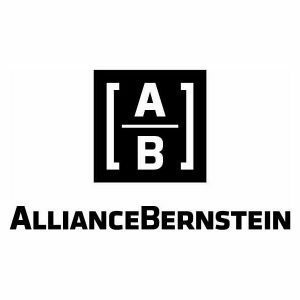Visit AB IQ for more analysis that matters to institutional investors>
It's no secret that a landscape of lower expected returns and higher volatility have institutional investors casting the net wider in search of new opportunity sets that can bolster portfolio diversification. Increasingly, responsible investing solutions are part of this conversation.
Momentum for responsible investing has been aided by two catalysts: In 2015, the United Nations (UN) developed Sustainable Development Goals (SDGs) to end extreme poverty, reduce inequality and protect the earth by 2030. And to coalesce efforts around the SDG 13 goal on climate change, the 2016 Paris Agreement produced a pledge to limit global warming.
These developments, along with a growing commitment to direct capital responsibly, have driven a broad wave of solutions. As with any investment category, there's no one-size-fits-all approach to responsible investing: distinctive opportunity sets, varying exposures to markets and segments, and different scopes of ESG themes and goals provide ample choice.
Categorizing Responsible Investing Solutions
The lack of uniform terminology is a bit of a challenge, with words like "ESG," "sustainable" or "sustainability," for instance, alternately used to refer to the broad spectrum of solutions or distinct categories. But there does seem to be some support coalescing around specific definitions.
Let's start with the integration of environmental, social and governance (ESG) considerations. In our view, integration isn't a specific solution but a foundation, because ESG considerations are financial considerations—a heavy carbon emitter carries both environmental and financial risks, for example. So, whether an issuer is being considered for a large-cap equity portfolio, emerging market debt strategy or multiasset solution, integrating ESG is vital to fundamental research.
Responsible solutions build on that foundation. If we envision solutions on a continuum that balances financial and responsibility goals, it might make sense to start with ethical solutions, which move beyond ESG integration. Ethical solutions apply negative screens to the more controversial areas of capital markets, reflecting moral considerations.
Best-in-class or positive screening seeks to reward the most positive or responsible issuers on ESG practices and behaviors. Strategies using best-in-class and ethical screening are predominantly designed to avoid doing harm. Ethical, values-oriented approaches have gradually evolved to include scrutiny of a company's ESG profiles as a means to reduce ESG-related risk and align with investors' moral values.
Further out on the responsibility continuum are solutions that give greater consideration to businesses' environmental and social effects on society: sustainable thematic strategies, sometimes simply called sustainable strategies. With a sustainability lens, investors consider the longevity of a company's products or business model and why it's sustainable over the long run.
Thematic investing uses a top-down process to identify global themes and then applies bottom-up fundamental research to identify the issuers best-positioned to capitalize on those themes. Combining sustainable and thematic approaches, by extension, seeks to invest along themes that will help the world tackle pressing environmental and social challenges.
Impact investing is intended to generate a measurable social and environmental impact on society along with a financial return. The key distinction between impact and other types of responsible solutions is the commitment to generate a specific, measurable and reportable impact by investing in issuers with that goal in their mission.
As with traditional investing, investors can access responsible solutions in equity, fixed income or across asset classes. Strategies can provide exposure to broad-based opportunities with higher beta or targeted markets or themes such as climate change or water that would bring more diversification potential to conventional portfolios along with more idiosyncratic risk. And, of course, they can be combined and deployed to complement existing exposures to bring an added dimension.
Surveying the Issuer Opportunity Set
Of course, what makes all of these solutions work are individual issuers, identified through careful research, with ESG considerations in the equation. While the global opportunity set is very broad, it's useful to organize issuers based on how they contribute to advancing responsibility.
Transition leaders are the high-profile issuers at the leading edge of ESG progress. Tesla is a good example—it's at the head of the electric vehicle (EV) field, driving the transition to a greener future for autos. Other leaders? Utilities and equipment manufacturers delivering wind and solar farms to drive the transition to net zero carbon. Transition leaders are often high quality and growth oriented.
Transitions require enablers—companies supplying vital materials, products and services to leaders. For every EV manufacturer, there's a supply chain to create battery components—cathodes, anodes, separators and electrolytes—and mining and processing the critical raw materials. For every wind or solar farm is a specialist firm getting it connected to the electrical grid. Enablers may be lesser known, but they offer abundant opportunities that tend to skew toward value.
We're also finding opportunities among underrecognized transition improvers—companies from all walks of life that are upping their ESG game. An improver could be a nickel-mining company working to reduce its emissions through upgrading its facilities. The ranks might also include a protein producer that, while building its business in more sustainable plant-based protein, is also setting targets for net-zero carbon emissions as well as packaging and food-waste reduction in its legacy animal-protein operations. Improvers may be off the beaten path, but they offer investors the chance to benefit from the market's eventual recognition of their ESG advances.
Of course, the responsible investing arena is always evolving, with new initiatives, products and services reshaping the map of firms that will benefit—and possibly those that will struggle. Some of these disruptors may be in the early venture-capital or private-equity stage right now, but they're coming—and bringing new avenues of diversification with them.
Early-Stage Potential: the Hydrogen Economy
One promising path is the "hydrogen economy." Japan is collaborating with 30 countries to establish 10,000 hydrogen-refueling stations by 2030. France and Germany have made multibillion-dollar investments in a transition to hydrogen as part of their COVID-19 recovery plans. And the Australian government launched a fund in 2020 to help develop a hydrogen industry.
While hydrogen won't be a silver bullet that instantly decarbonizes society, we believe it's likely to become an important part of the global energy mix over a 20-year time frame. In our view, green hydrogen has a bright future—even if the economics don't generally work today. For investors, that means preparing now to understand how different firms will be exposed to the hydrogen value chain.
Bellwether Projects in Carbon Capture and Storage
Another potential growth path is carbon capture and storage (CCS). To satisfy Paris commitments, CO2 generation needs to be reduced through greener products and captured from carbon emitters, "scrubbed" from the air using direct-air-capture technologies and chemical extraction, and stored permanently, safely and feasibly.
Our colleagues at Columbia University's Earth Institute are tracking bellwether CCS projects, including a recent Norwegian project to capture CO2 from industrial plants, convert it to a liquid and coinject it with water into offshore, subsurface geological formations for storage. If CCS can center on deep-ocean locations, entire operations could be powered by wind—an abundant energy source in those locations.
In the quest for diversification, responsible investing offers a different dimension to opportunity sets and the flexibility to direct capital toward specific responsibility goals or initiatives. And emerging opportunities continue to appear on the horizon.
Read more insights from this Quarter's edition of AB IQ>
Michelle Dunstan is Global Head of Responsible Investing and Portfolio Manager of the Global ESG Improvers Strategy at AllianceBernstein (AB).
The views expressed herein do not constitute research, investment advice or trade recommendations and do not necessarily represent the views of all AB portfolio-management teams and are subject to revision over time.








